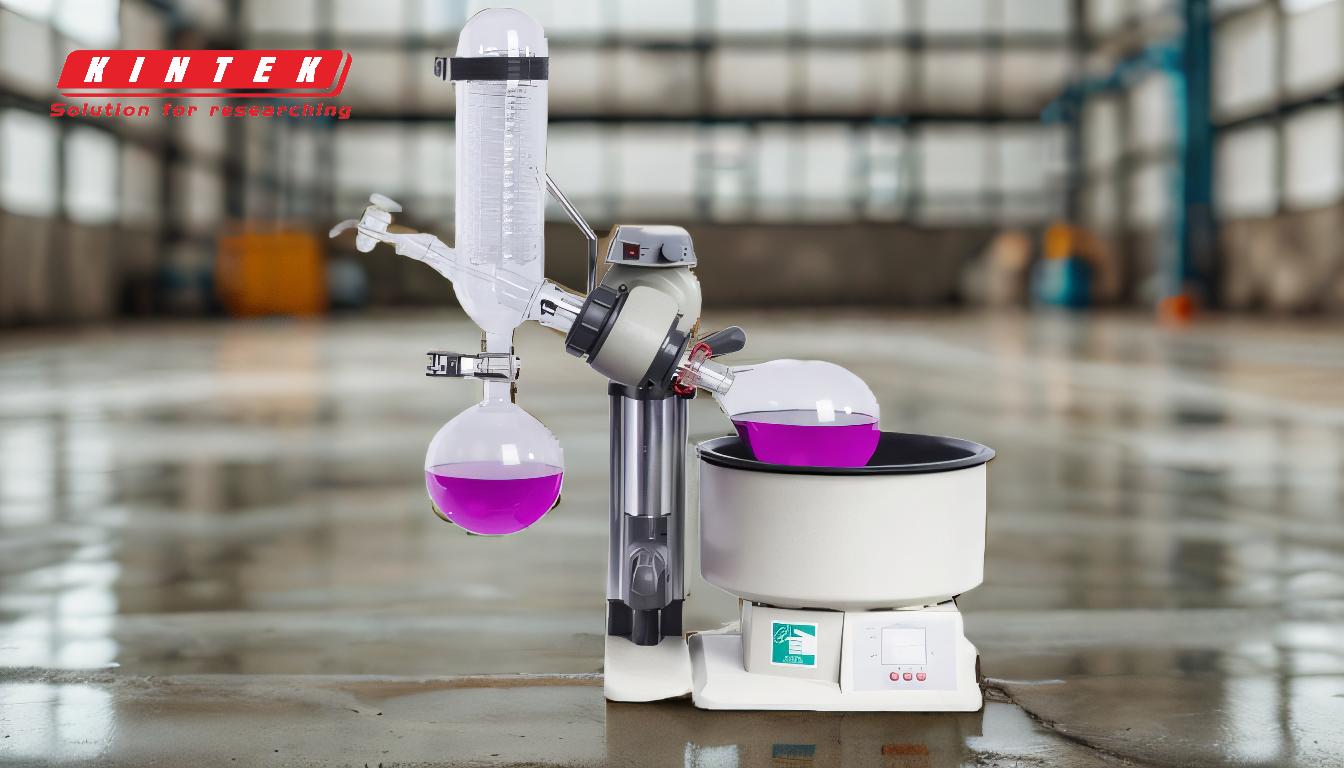The pressure of hexane in a rotovap (rotary evaporator) is a critical factor in determining its boiling point and distillation efficiency. Hexane, a common solvent, has a boiling point of approximately 68.7°C at atmospheric pressure (760 mmHg). However, in a rotovap, the pressure is reduced to lower the boiling point, enabling distillation at lower temperatures to avoid thermal degradation of sensitive compounds. The exact pressure used depends on the desired distillation rate, the rotovap's vacuum system capabilities, and the temperature of the heating bath. Typically, pressures in a rotovap range from 10 to 200 mmHg, depending on the application. For hexane, pressures closer to 10-50 mmHg are often used to achieve efficient distillation at lower temperatures.
Key Points Explained:

-
Role of Pressure in a Rotovap:
- Pressure reduction in a rotovap lowers the boiling point of solvents like hexane, allowing distillation at lower temperatures.
- This is particularly useful for heat-sensitive compounds that might degrade at higher temperatures.
-
Boiling Point of Hexane:
- At standard atmospheric pressure (760 mmHg), hexane boils at 68.7°C.
- Under reduced pressure in a rotovap, the boiling point decreases significantly, enabling distillation at temperatures as low as 20-40°C, depending on the vacuum level.
-
Typical Pressure Ranges in a Rotovap:
- Rotovaps typically operate at pressures between 10 and 200 mmHg.
- For hexane, pressures in the range of 10-50 mmHg are commonly used to achieve efficient distillation at lower temperatures.
-
Factors Influencing Pressure Selection:
- Desired Distillation Rate: Lower pressures allow for faster distillation but require a robust vacuum system.
- Heating Bath Temperature: The temperature of the heating bath must be adjusted in tandem with the pressure to optimize distillation.
- Solvent Properties: The volatility and thermal stability of the solvent (e.g., hexane) influence the ideal pressure and temperature settings.
-
Practical Considerations:
- Vacuum System Capability: The efficiency of the rotovap's vacuum pump determines the achievable pressure range.
- Safety: Lower pressures reduce the risk of overheating but require careful monitoring to avoid solvent bumping or system leaks.
- Application-Specific Requirements: The choice of pressure may vary depending on whether the goal is to recover the solvent or isolate a specific compound.
By understanding these key points, a purchaser or user of a rotovap can optimize the pressure settings for hexane distillation, ensuring efficient and safe operation.
Summary Table:
| Key Factor | Details |
|---|---|
| Boiling Point at 760 mmHg | 68.7°C |
| Typical Rotovap Pressure | 10-200 mmHg |
| Optimal Pressure for Hexane | 10-50 mmHg |
| Distillation Temperature | 20-40°C (depending on vacuum level) |
| Factors Influencing Pressure | Desired distillation rate, heating bath temperature, solvent properties |
| Practical Considerations | Vacuum system capability, safety, application-specific requirements |
Need help optimizing your rotovap settings for hexane? Contact our experts today for personalized advice!
















